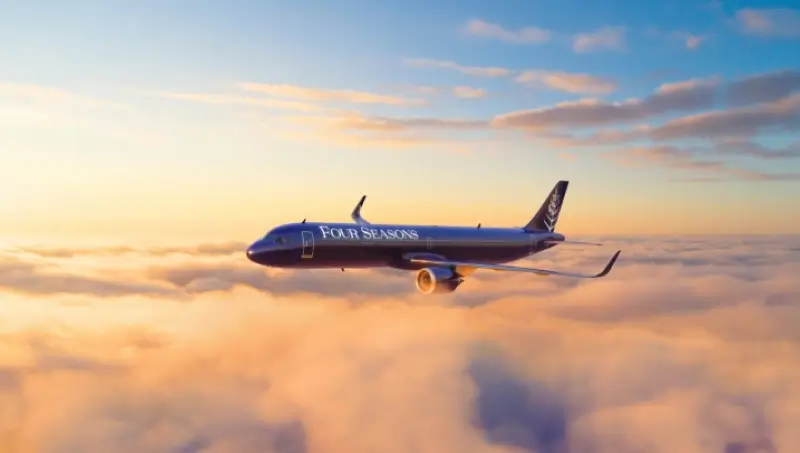
Flight attendants fight human trafficking
Jun 04, 2015

Flight attendants play a crucial role in the fight against human trafficking, leveraging their unique position to identify and report suspicious activities during flights. Trained to recognize signs of trafficking, they observe passenger interactions, behaviors, and potential signs of distress. By maintaining vigilance and fostering communication with law enforcement, flight attendants can intervene in critical situations, helping to rescue victims and provide them with the support they need. Their proactive approach not only raises awareness among crew members and passengers but also emphasizes the importance of collaboration in combating this global issue, making air travel safer for everyone.
Human trafficking is a global issue that affects millions of individuals, and flight attendants are stepping up to combat this heinous crime. As frontline professionals, they have a unique vantage point when it comes to spotting potential trafficking situations. By raising awareness and being trained to recognize the signs, flight attendants are playing a crucial role in the fight against human trafficking. This article explores how these dedicated individuals are making a difference and the importance of their involvement.
The Role of Flight Attendants in Identifying Trafficking
Flight attendants are often the first to interact with passengers during flights. Their position allows them to observe behaviors and interactions that may indicate trafficking. Victims of human trafficking may be traveling with their traffickers and could display signs of fear, anxiety, or submission. Additionally, they may have limited knowledge of their travel plans or show signs of coercion. Flight attendants are trained to recognize these indicators, which can be critical in identifying potential victims.
Training and Awareness Programs
To effectively combat human trafficking, various airlines have implemented training programs for their flight attendants. These programs equip them with the knowledge and tools needed to identify suspicious behavior. Training often includes:
| Training Component | Description |
|---|---|
| Recognizing Signs | Identifying physical and behavioral indicators of trafficking. |
| Reporting Procedures | Understanding how to report suspicions to authorities. |
| Engaging with Passengers | Learning how to approach and communicate with potential victims safely. |
By participating in these training programs, flight attendants become more vigilant and proactive in their approach to preventing human trafficking. They are empowered to take action, which can ultimately save lives.
Partnerships with Organizations
Many airlines collaborate with anti-trafficking organizations to enhance their efforts. These partnerships help provide resources, support, and expertise to flight attendants. Some notable organizations include:
- Polaris Project: A leader in the global fight against human trafficking, offering training and resources for airline staff.
- Airline Ambassadors International: Focuses on educating flight attendants about trafficking issues and providing them with tools to assist victims.
- Blue Campaign: A U.S. Department of Homeland Security initiative aimed at raising awareness and fostering partnerships to combat human trafficking.
These collaborations not only enhance awareness but also provide flight attendants with a network of support when they suspect trafficking. By working together, airlines and organizations can create a more effective response to this crisis.
Real-Life Impact: Success Stories
Flight attendants have successfully intervened in trafficking situations, leading to the rescue of victims. There are numerous documented cases where vigilant crew members have reported suspicious behavior, resulting in law enforcement action. For example:
- In 2019, a flight attendant noticed a young girl traveling with an older man who was overly controlling. After discreetly communicating with the girl, she contacted authorities upon landing. The girl was rescued, and the trafficker was apprehended.
- Another case involved a flight attendant who observed a passenger displaying signs of distress. After speaking with her, the attendant suspected trafficking and informed the captain, who notified law enforcement upon landing. The authorities were able to intervene effectively.
These stories highlight the critical role flight attendants play in identifying and acting upon suspicious situations. Their quick thinking and decisive actions can dramatically alter the lives of those caught in trafficking.
Conclusion: The Importance of Ongoing Education
As the fight against human trafficking continues, ongoing education and awareness for flight attendants remain paramount. The airline industry must prioritize training and partnerships to ensure their staff is equipped to handle these complex situations. By empowering flight attendants with knowledge and resources, we can create a united front against human trafficking.
By raising awareness within the airline community, we not only improve the chances of identifying victims but also foster a culture of vigilance and responsibility. Flight attendants are more than just service providers; they are vital advocates in the battle against human trafficking. Their commitment to this cause can help save lives and bring an end to this global crisis.
In conclusion, the collaborative efforts of flight attendants, airlines, and anti-trafficking organizations represent a powerful force in the fight against human trafficking. With continued education, training, and support, we can hope to eliminate this grave injustice from our society.
Related Articles

Explore Thailand: The Best Islands to Visit for Paradise, Adventure, and Relaxation

The Ultimate Guide to the Best Islands in Thailand for Your Next Getaway

Do babies need passports? How to get a passport for a newborn

How to get a U.S. passport fast: here’s how to expedite the process

What is Mobile Passport Control: 5 reasons why you should use it

SENTRI vs. Global Entry: A detailed guide

Do you need a passport to go to the Bahamas? Let’s find out

Do you need a passport to go to Mexico? A detailed guide

Do you need a passport to go to Canada? We got the answer

Do You Need a Passport for a Cruise: An Essential Travel Guide

Booster Seat Requirements: All the Rules to Follow in Your Rental Car

What Are the World’s Most Powerful Passports, and How Does Yours Rank?

How to Take a Passport Photo at Home: A Helpful Guide

You've got to have heart! Southwest's new livery

Your opinion: Should water be free on low cost carriers?

Young women bolder than guys as solo travellers
